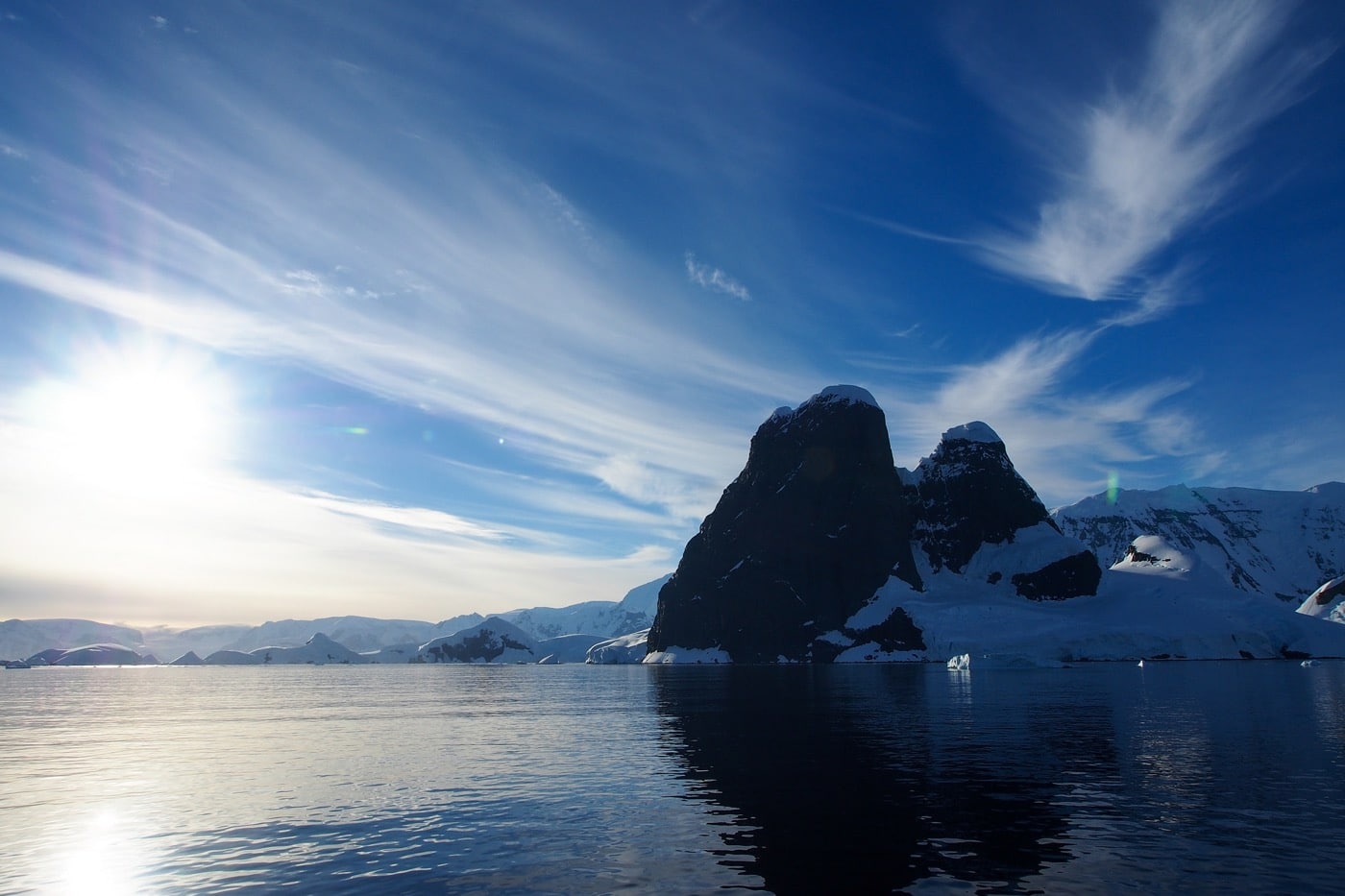At the top of my travel bucket list, to use a way over-used term, Antarctica occupied the number one, two and three positions. So when I was approached about visiting the Great White Continent, I grabbed my passport, parka and camera and jumped on it.
Travel to the bottom of the world is no quick commute. After leaving my cozy California perch I flew overnight to Buenos Aires then another four hours to Ushuaia, the tip of Argentina and the capital of Tierra del Fuego. On the following day I arrived at the Oficina Antártica Terminal de Pasaiero to board ship for passage to the continent where there’s no south of south.

Antarctica is not your typical destination. The seasons in Antarctica are the opposite of those in the Northern Hemisphere—summer is December through February, winter is June, July and August and cruise season is November through March (late spring through early fall). On the cruise calendar, spring (November) means fewer ships jockeying for position at prime spots and a virtually untouched landscape. It’s also mating season; penguins are plentiful but you won’t see newborns. Mid-season (December and January) translates to warmer weather (relatively speaking), 20 hours of daylight and newly hatched penguin chicks, but being the peak of the season it also means that ships are in abundance, too. Late season (mid-February to March) offers whale watching but thin-blooded types take note: temperatures are dropping fast.
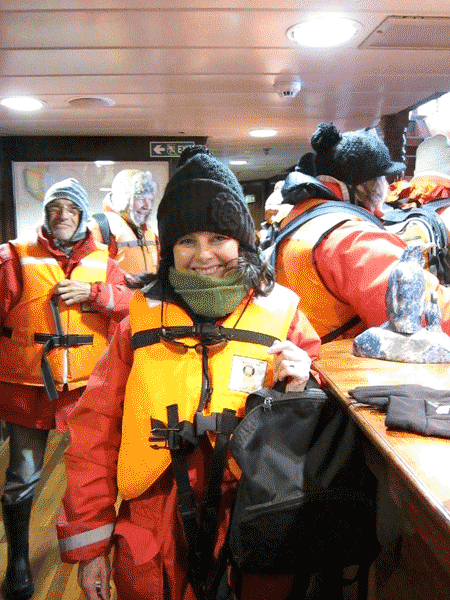
Four types of ships travel to Antarctica: icebreaker, research, expedition and luxury. With each there are pluses and minuses but my scale tipped toward the more authentic, adventure experience—a mid-size expedition vessel (80 passengers), the M/V Antarctic Dream. Here’s a peek into my thought process. While luxury ships feature five-star amenities, many of the larger ones limit the Antarctic adventure to an experience from the ship, not on shore (i.e. no landings). Then they stipulate that the number of passengers allowed on land simultaneously is limited to 100, which means splitting that time with passengers on larger ships. A big plus for the larger ships though, while your landings are limited, the larger vessel will handle the high seas more easily.
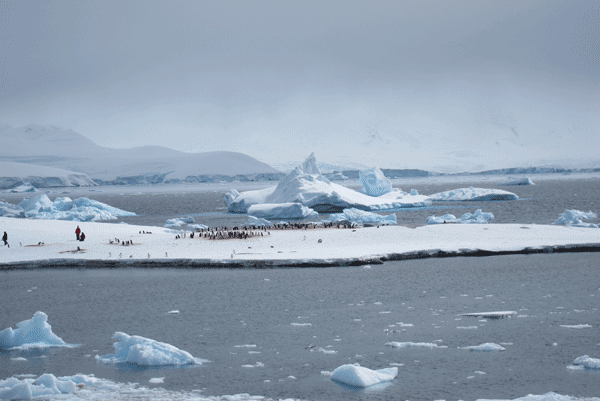
It’s true, I did seek authentic but I also wanted a safe and comfortable environment (after all, it was to be my home for 11 days). The big bonus was the open bridge policy where passengers were allowed on the bridge with the captain and crew as they continually charted and negotiated our course. This could begin right out of Argentine waters.
Then there’s the Drake Passage. Regardless of choice of ship, there is no getting around the challenge of crossing Drake’s Passage en route from South America. Infamously known as Earth’s roughest waters, it’s where the Atlantic and Pacific Oceans converge; a challenge of china crashing and chairs landing upside down and sliding across the floor. Crossing conditions can be 36 hours of rough seas and gale force winds en route to (and from) Antarctica. Fortunately for me, it lived up to every YouTube-worthy expectation. After two days of our ship pitching from one side to another, I awoke to calm and a view from the dining room best described as a winter wonderland – Antarctica.
What are the realities of Antarctica? In the end, where you land is entirely weather dependent. If it’s too windy and dangerous to land the Zodiacs at one spot, the captain will sail to another. On our first day’s briefing, Jordi, the ship’s expedition leader explained: “Flexibility is the word for visiting Antarctica.” And changeability is another adjective if you’re speaking of weather, for there will be an assortment of conditions – rain, sleet and snow, as well as warm, sunny days.
Antarctica is a continent of superlatives. Known as the coldest, highest, driest, windiest and iciest land mass, it is considered one of the least hospitable places on earth. However, the rewards for me and my fellow passengers were bountiful … from sitting amongst penguins and watching an iceberg break to wading through knee-high snow during a continental landing and then celebrating it atop the ship with champagne toasts, salsa dancing and a conga line (full disclosure: many passengers were South American).
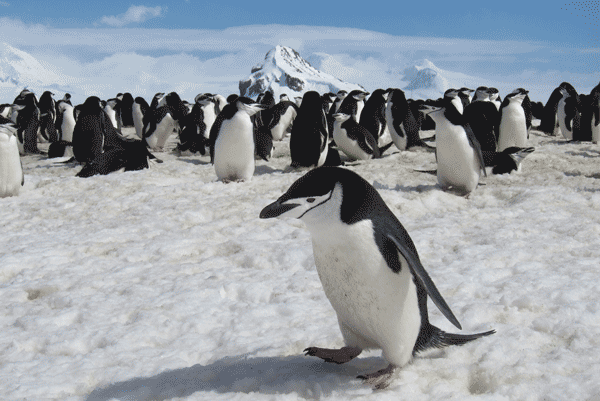
And when the landings began, Jordi greeted us over the sound system each morning between 6:30 and 7:00 with a “Goof morning everybody.” Then Cristina, our expedition guide and ship’s photographer prepared us for our excursion: “It’s like going to another planet where animals receive you with a smile.” Zodiac leader, Maximilian, offered a memorable tip: “Don’t keep your eyes behind the camera all the time. Take pictures with your mind and keep them in your soul.”
Our initial landing was at Half Moon Island where excitement was unabated. On our Zodiac approach we sighted our first penguin—the continent’s “signature” animal. After climbing the snow-crusted hill, our reward was a highly gregarious, very noisy penguin colony, where we spotted four species (Chinstrap, Adélie, Gentoo and Macaroni). Then we were on to Hannah Point, much like time-travel to a prehistoric era, where the site was almost barren of snow but not barren of animals. Here we discovered a breeding colony of southern elephant seals, the largest of all seals (males can weigh more than that of two hippopotamus). And I must say the male we passed lounging alone on the beach resembled an even bigger version of Ayer’s Rock.
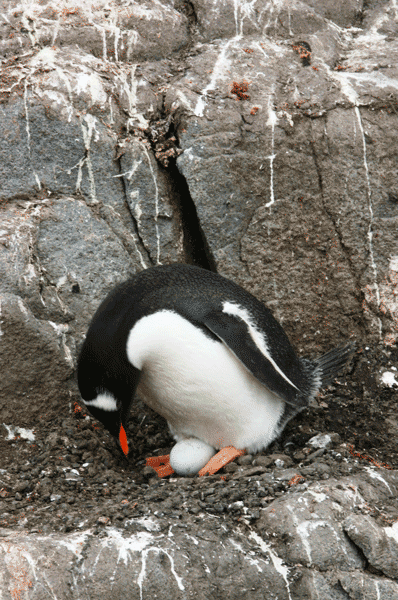
Finally we reached Selvick Cove where heavy ice conditions halted our progress when aiming for Cuverville Island. This necessitated Plan B, which translated to a continental landing (not always possible on every cruise). En route we passed an ice floe with an Emperor penguin (the four-foot tall penguin featured in “March of the Penguins”).
On the continent we were greeted by sun and front-row, center seats to Antarctica’s exclusive penguin theatre, where we lazed in the snow as the tuxedo donned attractions waddled along their well-worn route, slid on their bellies and loudly interacted with one another. Our on-board celebration was enhanced by a centerpiece display of a block of 1,000-year-old ice. A particularly hearty Zodiac driver plucked the 60 pound chunk from the sea, around which the evening’s bar was themed. My choice: a Pisco Sour made with 1,000-year-old ice.
Our two-hour zodiac excursion to Cirerva Cove was a tour amongst white, crystal clear blue icebergs. The scenery was stunning, but the highlight was when Maximilian, our ever-alert Zodiac driver, spotted an unstable iceberg (approximately the size of a two-story house). From a safe distance our Zodiac idled as a series of pops and crackles sounded and then the iceberg completely flipped. Another out-of-the-ordinary sighting was a three-week-old crabeater seal pup floating on an ice floe. Crabeaters are the world’s most common seals but spotting them is rare because they inhabit Antarctica’s packed ice zone and are seldom on land.
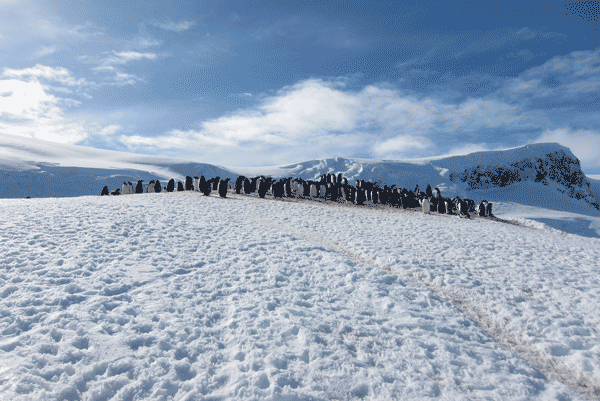
“We’ve popped up on your ship from those little buildings over there, so welcome to Port Lockroy, greeted Cat, one of four seasonal staff at the former British research station prior to our land visit. Now a historical museum, gift shop (yes, they take credit cards) and post office (the world’s southernmost), they’ll even stamp your passport. And as an extra treat, we spotted a Gentoo penguin protecting its recently laid egg just outside the museum’s heavily trafficked entrance.
In snow flurries we navigated between icebergs towards the trip’s most southernmost latitude, the well-known Lemaire Channel,until passage to its entrance was blocked by ice. It was with the captain and crew on the bridge that I recorded the event with my camera, as well as with my mind, for I knew this was most likely as far south as I would ever travel in my lifetime (latitude of the South Pole, 90ºS).
On-board activities were educational with lectures by geologists, historians, naturalists, expedition leaders and professional photographers, all rounding out the adventure and these helped to fill in the blanks of our knowledge of Antarctica. Here’s what we learned: that Antarctica is the world’s 5th largest continent, has no towns, no typical ports of call, no government, no military and no native population (it’s Earth’s only continent with no human population, though anywhere from 1,000 to 5,000 people reside there throughout the year at research stations).

Antarctica has recorded: the world’s lowest temperature, -129ºF on July 21, 1983; the highest average elevation – 8,200 feet; the driest seasons – average precipitation is less than two inches/year; the strongest winds – gales once reached 200 mph on Commonwealth Bay located on the George V coast where the conditions are the iciest and the thickest ice can reach a depth of almost three miles. Last, at the “exact” South Pole, the sun sets only once a year and this sunset lasts seven days.
I think a few words about the passenger profile may be warranted. Passengers who go to Antarctica are definitely well traveled. As they say, “It’s not their first rodeo.” Destinations common to most were Machu Picchu, the Galapagos and the Arctic. As she mimicked picking apples from an imaginary tree, Ida, a hearty, Hungarian businesswoman said: “I had two months off so I picked my dream.” And for many Antarctica signifies a dream and the biggest apple of all.
Antarctica is unlike its six sister continents in that it’s a newly discovered destination—Roald Amundsen reached the South Pole in 1911 and Robert Falcon Scott in 1912. It’s a destination void of world class shopping, legendary golf courses, 24 hour casinos, city tours and set in stone itineraries. Yet it attracts 30,000 annual visitors. Is there any wonder why? Wondrous, exceptional, uncommon and unprecedented—these are all words associated with Antarctica. My addition to the list: mandatory.
[alert type=white]
What to Know Before You Go:
- Do your homework with your ship’s selection.
- Consider a lengthier itinerary, which adds South Georgia and/or the Falkland Islands.
- Follow the packing list your ship provides (reminder: there are no North Face outlets in Antarctica).
- Even if you never get seasick, bring sea bands, sea sickness pills, the patch – whatever your choice. I overreacted and brought both the patch and motion-sickness wrist bands, which I wore simultaneously, and never got sick (unlike many of my fellow passengers).
- Don’t lament should your itinerary fail to include rounding Cape Horn – it’s unimpressive.
- Stay flexible.
- Consider a pre-or post-stay in Santiago or Buenos Aires.
What to Know about Some of the Ships:
The Spirit of Enderby
An icebreaker ship that is suited for expedition travel. It carries just 48 passengers in comfortable accommodations with semi-private and private baths and features cuisine by Australian and New Zealand chefs. Starts at $5,050 (8-11 days).
M/V Ushuaia
Built originally for oceanographic research, the Ushuaia is a steel-hulled, ice-strengthened vessel, which was recently converted to passenger voyages and accommodates 84. Starts at $4,490 (10-20 days).
M/V Antarctic Dream
The predominately South American crew sets the stage for a fun environment and this 80 passenger expedition ship offers all the amenities and services that can be expected on this size vessel. Unexpected bonus: exceptional food. Starts at $6,900 (8-11 days).
National Geographic Explorer
Operated by Lindblad Expeditions, the cruise line’s well respected reputation reflects its longevity and quality of product. The state-of-the-art 148 passenger ship is luxury lined, including two restaurants and a wellness spa. Starts at $11,740 (12-22 days).
L’Austral
Said to be “the fruit of Italian expertise and French sophistication,” this luxury mega-yacht featuring 132 cabins (including 20 Prestige Suites with private balconies) for 264 passengers was launched in 2011. Starts at $7,461 (11-16 days).
[/alert]

